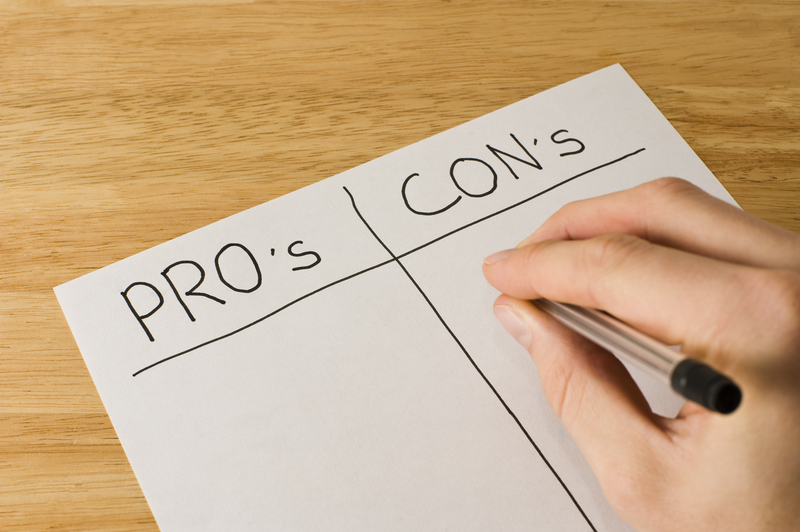Why Moving a Piano Yourself Is a Risk You Shouldn't Take
Posted on 22/06/2025
Why Moving a Piano Yourself Is a Risk You Shouldn't Take
Pianos are magnificent instruments, often becoming the centerpiece of a music lover's home. They carry not only significant sentimental value but also represent a major financial investment. But when the time comes to move, too many people underestimate the challenges involved in piano relocation. Attempting a DIY piano move might seem economical, but it's a decision fraught with risks--risks capable of causing physical harm, property damage, and costly repairs. In this comprehensive article, we'll explore why moving a piano yourself is a risk you shouldn't take, and why hiring experienced professional piano movers is always the safer, smarter option.

Understanding the Complexity of Moving a Piano
Before diving into the dangers of moving a piano yourself, it's important to recognize just what makes pianos so challenging to relocate. Unlike most household items, pianos are a paradox of weight, fragility, and value.
What Makes Pianos So Difficult to Move?
- Exceptional Weight: Even the smallest upright piano can weigh over 400 pounds. Grand pianos can tip the scales at more than 1,200 pounds. That's more than some motorcycles and even small cars!
- Awkward Shape and Size: Whether grand or upright, pianos are bulky and unwieldy. Their shape makes them difficult to grip, maneuver through doors, or move up and down stairs.
- Delicate Internal Components: Inside a piano are thousands of moving parts--hammers, strings, dampers, and more. Even a minor jolt can knock these components out of alignment, affecting sound and playability.
- Value--Sentimental & Monetary: For many owners, pianos are priceless family heirlooms. For others, they represent thousands to tens of thousands of dollars in investment. Their loss or damage is devastating.
These unique characteristics are at the heart of why you should never move a piano yourself.
The Hidden Dangers of DIY Piano Moving
Physical Harm and Personal Injury
One of the most significant risks associated with moving a piano yourself is the danger of injury. Consider the following:
- Muscle Strains - Attempting to lift or push something as heavy as a piano places nonsensical stress on your back, shoulders, and arms. Permanent injuries are not uncommon.
- Crushed Fingers and Feet - If the piano slips--even a little--the sheer weight can easily crush feet or fingers below it.
- Falls and Accidents - Stairs and uneven surfaces turn a piano move into a nightmare. A single misstep can lead to falls, with the piano potentially landing on movers.
- Heart Stress and Fatigue - The physical exertion required by amateur movers can overwhelm the body, sometimes leading to medical emergencies--especially for those not in prime physical condition.
Property Damage Risks
Even if personal safety isn't enough, think of your home or the building you're moving from or into:
- Scratched or Gouged Flooring - Hardwood, tile, and carpet are all susceptible to damage from heavy pianos dragged or dropped onto them.
- Dented Doors and Walls - Many pianos are simply too wide for doorways and tight corners, leading to dents, holes, and chipped paint as you attempt to wedge them through.
- Broken Stairs and Railings - The weight and awkwardness can easily damage stair treads, banisters, and railings during a do-it-yourself piano move.
Damage to the Piano Itself
Even seemingly minor bumps and jostles can have disastrous effects on your instrument:
- Dislodged Internal Parts - The delicate mechanisms inside can shift, requiring expensive repairs and affecting sound quality.
- Broken Legs, Pedals, or Casters - These external fixtures are particularly vulnerable during a move, especially if improper lifting or handling techniques are used.
- Soundboard and String Damage - Excessive force or jerky movements can crack the soundboard or snap strings--both notoriously expensive to fix.
- Cosmetic Damage - Scratched or chipped piano finishes are not only unsightly but diminish the instrument's resale and sentimental value.
Financial Consequences: The High Cost of a Failed Piano Move
If you're thinking that moving a piano yourself saves money, think again. Unexpected expenses from mishaps can easily outpace the minimal savings of refusing professional help:
- Repair Costs - Internal or external damages can cost hundreds or even thousands of dollars to fix.
- Medical Bills - Injuries, especially those requiring ER visits, add up quickly.
- Home Repair Costs - Fixing damaged floors, walls, or stairs is rarely cheap.
- Total Loss - In the worst-case scenarios, a piano is irreparably damaged or destroyed, resulting in total loss.
Common Mistakes Made During Self-Moves
Many people underestimate how specialized a piano move actually is. Here are some typical mistakes that put your piano and safety at risk:
- Underestimating Weight and Bulk - Lifting "with your legs" only goes so far when you're faced with 800 pounds of awkward wood and metal.
- Poor Planning and Preparation - Moving a piano requires precise planning--measuring doorways, plotting routes, and removing obstacles.
- Lack of Proper Equipment - You simply can't move a piano safely with just a few hands. Skid boards, piano dollies, straps, and padding are all essential tools.
- Inadequate Manpower - Even a group of strong individuals can make mistakes if they're not trained for this kind of task. Team coordination is critical but rare among amateurs.
- Improper Lifting Techniques - Tipping, dragging, or twisting a piano can cause both physical harm and instrument damage.
- Unsafe Vehicle Use - Pianos require proper tie-down and support during transit; failure here can have catastrophic results on arrival.
The Importance of Specialized Tools and Techniques
Professional piano movers use unique tools and methods to ensure the move is safe for all involved. Here's how experts safeguard your treasured instrument:
- Piano Skids/Boards: Secure, padded boards keep a piano stable during movement and transport.
- Heavy-duty Dollies: Designed specifically to carry pianos, these allow for safer and smoother moves across different surfaces.
- Custom Straps and Padding: Protects both the piano and your home from dents, scrapes, and chips.
- Meticulous Disassembly/Assembly: For certain moves, especially with grand pianos, professional movers partially disassemble parts like legs and pedals for safe transit and reassemble on delivery.
- Precision Coordination: Experienced teams communicate and work in unison, minimizing movement and maximizing safety.
Unless you have regular access to this kind of equipment and know-how, self-moving is a recipe for disaster.
Why Professional Piano Movers Are Worth Every Penny
Trained Expertise
Professional piano movers are more than just strong--they're specially trained. They know how to:
- Assess the best routes in and out of your property
- Handle different types of pianos, from uprights to concert grands
- Use the right equipment for every scenario
- Respond to unexpected challenges along the way
This level of expertise comes from years of hands-on experience, which no DIY attempt can replicate.
Insurance and Liability
Reputable piano movers carry insurance policies specifically designed to cover your instrument in case of unforeseen incidents. If something goes wrong, you're protected--unlike DIY moves, where one slip-up can result in costly loss.
Peace of Mind
Entrusting your piano to professionals means less stress during your move. With pros, you don't have to worry about:
- Finding enough strong helpers
- Renting and learning to use unfamiliar equipment
- Protecting your fingers, back, and home
- Coordinating logistics and timing
Instead, you can focus on settling into your new home--and on enjoying your piano when it arrives in perfect condition.
Piano Moving Myths: Busted
Myth #1: "If we have enough people, we can do it safely!"
Fact: Without experience and the right gear, even strong groups can struggle--leading to costly missteps and injuries.
Myth #2: "The piano looks sturdy--it can take a little bump or two."
Fact: Pianos are intricate. Internal misalignments from minor jostles can result in expensive repairs and long-lasting sound issues.
Myth #3: "Hiring movers is too expensive!"
Fact: Compared to the price of medical and repair bills--or replacing your instrument entirely--professional help is a bargain.

How to Choose the Right Piano Moving Company
If you want to avoid the dangers discussed above, hiring a specialized piano mover is a must. But how do you pick the right one? Here are some tips:
- Ask for References: Reputable companies should have plenty of satisfied clients.
- Check Insurance and Licenses: Don't be afraid to request proof of coverage and local licensing.
- Review Experience: Look for teams with years of piano-specific moving experience.
- Request a Detailed Estimate: Make sure the price includes all aspects of the move--pickup, transport, delivery, and setup.
- Read Online Reviews: Platforms like Google, Yelp, or Facebook provide insight into a company's reputation and reliability.
Final Thoughts: Don't Put Your Piano--or Yourself--at Risk
At the end of the day, moving a piano yourself is simply too risky. Between the chance of serious personal injury, potential for extensive property damage, risk to your valuable instrument, and skyrocketing hidden costs, it's simply not worth it.
Instead, always hire a professional piano moving service whenever you need to relocate your cherished instrument. Whether you're moving across town or across country, trust the experienced hands of specialists--so you can continue to enjoy your piano for years to come.
Remember: When it comes to moving a piano, doing it yourself isn't "resourceful" or "cost-effective"--it's a risk you shouldn't take. Let the professionals protect your investment, your health, and your peace of mind.



